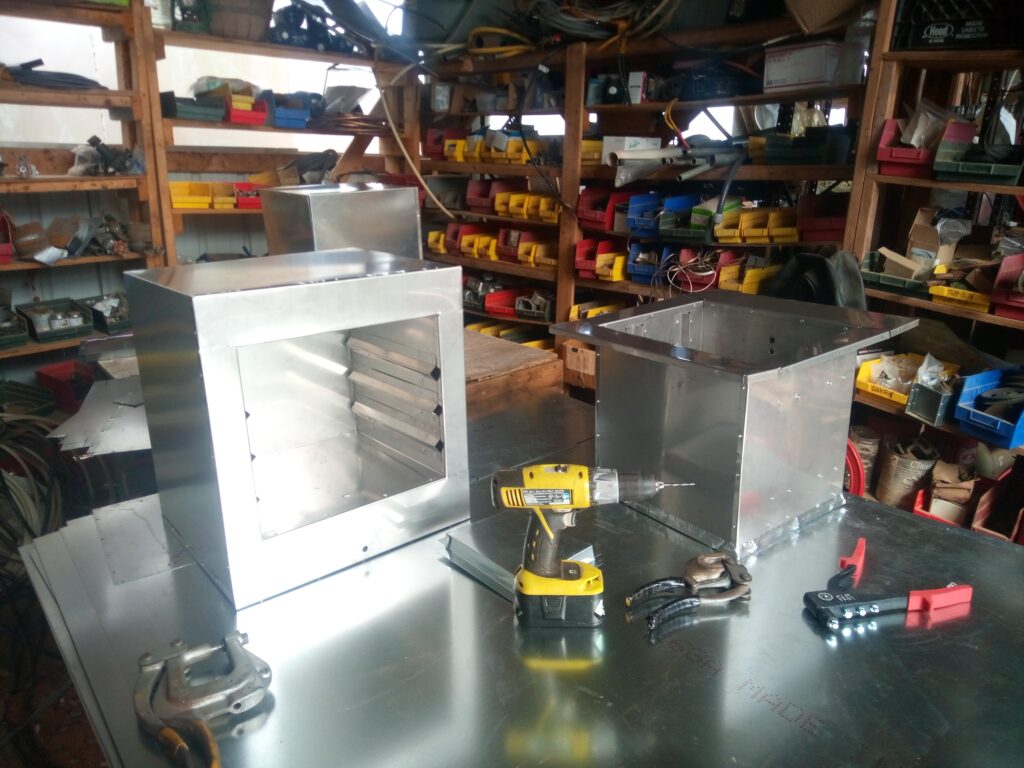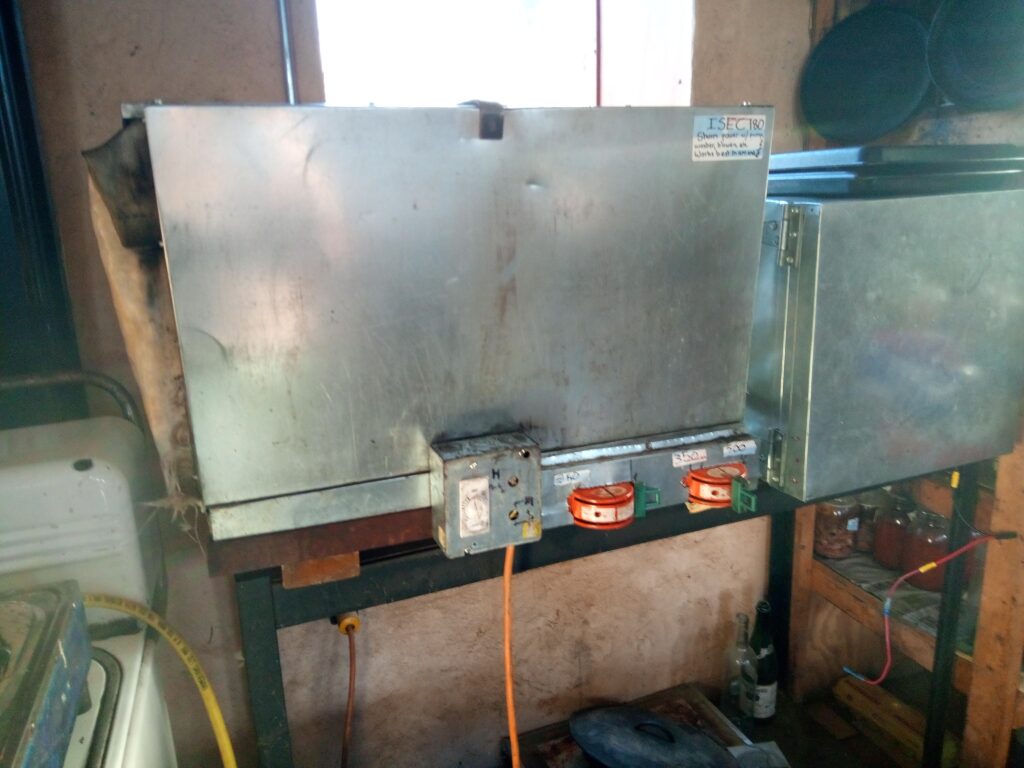Insulated Solar Electric Cookers (ISEC) is a new technology that has revolutionized the accessibility and convenience of solar cooking. In cooperation with Cal Poly University, LEF has been at the forefront of building, testing and optimizing ISECs of various sizes and wattages.
The concept is simple. A PV panel (or multiple panels) is connected directly to a nichrome burner in a metal box lined with non-flammable insulation. The burner gets hot when the sun is on the panel, and the insulation ensures that the heat transfers fully to the food being cooked. With an ISEC, a modestly sized PV supply can do a significant amount of cooking. A typical household electric range might use 8,000 watts, for example, while a Roxy Oven works well with 400 watts or less. Using a smaller panel means the cooking takes longer, but it still works.
An ISEC may be used as a stove or an oven. A pot may be placed directly on the burner to use the cooker as a stove. Or trays may be placed on the rails on the sides of the inner box to bake or roast. The long, moderate heat put out by the burner is ideal for baking potatoes, for example.
A daylight drive appliance, an ISEC requires no batteries or other expensive electronics. In an ISEC, the insulation itself is a cheap, durable “battery” that maintains high temperatures as solar conditions change, or power is diverted to another appliance on the same circuit.
At LEF we manufacture the Roxy Oven by hand in our metal working shop. Roxy Oven is available for sale through our company Living Energy Lights. We are working on designing and testing larger models of ISEC which would be intended for use on a shared circuit with other daylight drive appliances.

Interested in building your own ISEC? LEF’s Insulated Solar Cooker Construction Manual shows you how.

